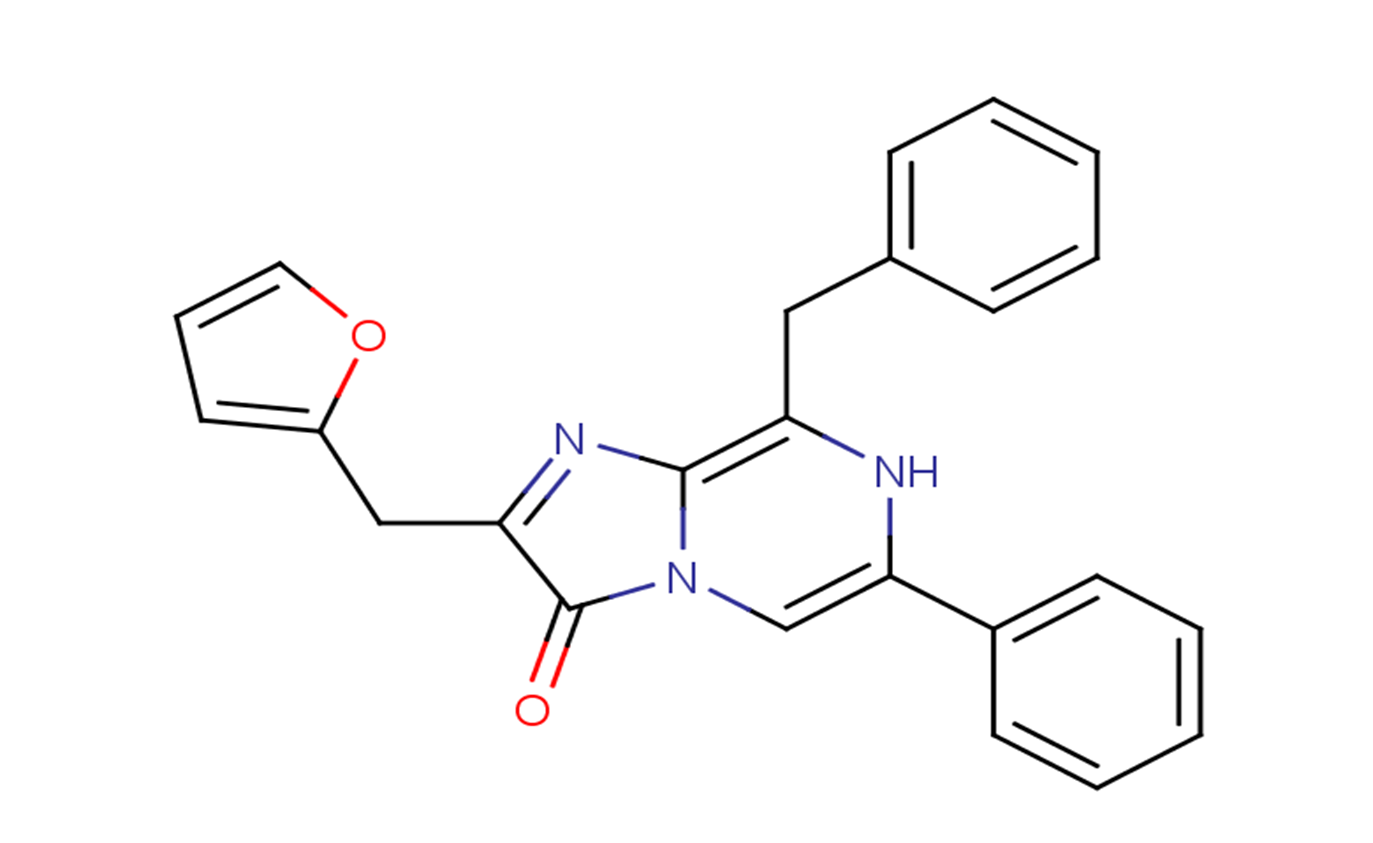
Furimazine
CAS No. 1374040-24-0
Furimazine( PBI 3939 )
Catalog No. M23530 CAS No. 1374040-24-0
Furimazine is an imidazopyrazinone substrate. NanoLuc (Nluc) paired with Furimazine produced 2.5 million-fold brighter luminescence in mammalian cells relative to Oluc-19 with Coelenterazine.
Purity : >98% (HPLC)
 COA
COA
 Datasheet
Datasheet
 HNMR
HNMR
 HPLC
HPLC
 MSDS
MSDS
 Handing Instructions
Handing Instructions
| Size | Price / USD | Stock | Quantity |
| 2MG | 537 | In Stock |


|
| 5MG | 857 | In Stock |


|
| 10MG | 1161 | In Stock |


|
| 25MG | 1701 | In Stock |


|
| 50MG | 2313 | In Stock |


|
| 100MG | 3123 | In Stock |


|
| 200MG | Get Quote | In Stock |


|
| 500MG | Get Quote | In Stock |


|
| 1G | Get Quote | In Stock |


|
Biological Information
-
Product NameFurimazine
-
NoteResearch use only, not for human use.
-
Brief DescriptionFurimazine is an imidazopyrazinone substrate. NanoLuc (Nluc) paired with Furimazine produced 2.5 million-fold brighter luminescence in mammalian cells relative to Oluc-19 with Coelenterazine.
-
DescriptionFurimazine is an imidazopyrazinone substrate. NanoLuc (Nluc) paired with Furimazine produced 2.5 million-fold brighter luminescence in mammalian cells relative to Oluc-19 with Coelenterazine.
-
In Vitro——
-
In Vivo——
-
SynonymsPBI 3939
-
PathwayOthers
-
TargetOther Targets
-
RecptorOthers
-
Research Area——
-
Indication——
Chemical Information
-
CAS Number1374040-24-0
-
Formula Weight381.43
-
Molecular FormulaC24H19N3O2
-
Purity>98% (HPLC)
-
SolubilityDMSO:100 mg/mL (262.17 mM)
-
SMILESO=C1C(CC2=CC=CO2)=NC3=C(NC(C4=CC=CC=C4)=CN31)CC5=CC=CC=C5
-
Chemical Name——
Shipping & Storage Information
-
Storage(-20℃)
-
ShippingWith Ice Pack
-
Stability≥ 2 years
Reference
1.Hall MP, et al. Engineered luciferase reporter from a deep sea shrimp utilizing a novel imidazopyrazinone substrate. ACS Chem Biol. 2012 Nov 16;7(11):1848-57.
molnova catalog



related products
-
BPU-11
BPU-11 is an HCN4 CLP ligand that acts by modulating channel function and completely abolishing the cAMP-induced shift in V1/2.
-
Cetylpyridinium chlo...
Cetylpyridinium chloride (CPC) is a cationic quaternary ammonium compound used in some types of mouthwashes, toothpastes, lozenges, throat sprays, breath sprays, and nasal sprays.
-
PD 90780
PD 90780 is a non-peptide antagonist of nerve growth factor (NGF) that interacts with NGF and prevents it from binding to p75NTR, inhibiting the NGF-p75NTR interaction with IC50s of 23.1 and 1.8 μM in PC12 cells and PC12nnr5 cells, respectively.



 Cart
Cart
 sales@molnova.com
sales@molnova.com


